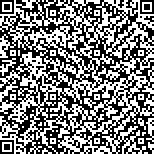廖宇桦,任海涛,刘珍珍.适应性支持通气治疗慢性阻塞性肺疾病急性加重的疗效与安全性分析[J].内科急危重症杂志,2016,22(1):
扫码阅读全文

|
| DOI: |
| 中文关键词: 适应性支持通气 慢性阻塞性肺疾病急性加重 安全性 呼吸力学 |
| 英文关键词:adaptive support ventilation(ASV), acute exacerbation of chronic obstructive pulmonary(AECOPD), safe, respiratory mechanics. |
| 基金项目: |
|
| 摘要点击次数: 2341 |
| 全文下载次数: 3917 |
| 中文摘要: |
| 目的:探讨临床应用适应性支持通气(ASV)模式治疗慢性阻塞性肺疾病急性加重(AECOPD)患者的疗效及安全性。 方法:选择2013年1月至2015年3月因AECOPD入ICU需行有创机械通气患者,随机分成两组,实验组应用ASV模式通气,参数设置为病人预期体重(kg),分钟通气量百分比(MV%)和高压报警限制。对照组应用SIMV+PSV模式,潮气量在6~8ml/kg,指令频率12次/分。两组FiO2、PEEP、流量触发、压力上升时间设置均相同,通气2小时后记录呼吸力学、血气分析及血流动力学指标。 结果:两组患者中均未出现呼吸机相关性肺损伤(VILI)病例,与SIMV+PSV模式相比,ASV组在潮气量、肺动态顺应性、呼气时间常数均高于对照组(P<0.05), 差异有统计学意义;而气道峰压低于对照组(P<0.05), 差异有统计学意义。两组通气模式在血气分析和血流动力学指标均无明显差异(P>0.05)。 结论:ASV用于治疗AECOPD患者是一种安全、有效的智能化通气模式,是先进的计算机技术与临床应用相结合的成果,患者的舒适性更高,同时也避免了以往呼吸机复杂的参数调节,值得临床推广使用。 |
| 英文摘要: |
| Objective: To study the efficacy and safety of adaptive support ventilation(ASV) in the treatment of acute exacerbation of chronic obstructive pulmonary (AECOPD). Method: We chose inpatients in intensive care unit(ICU), who needed invasive mechanical ventilation and enrolled due to acute exacerbation of chronic obstruction pulmonary, they were randomly divided into two groups, the experimental group, in which received ASV mode ventilation, and predicted body weight(kg), minute ventilation percentage(MV%) and high alarm limit level were set; While the other group received SIMV PSV mode, tidal volume 6-8ml/kg, frequency 12times/min. And the two groups shared the same FiO2, PEEP, flow trigger point and the pressure rise time, then respiratory mechanics, blood gas analysis and hemodynamic parameters were recorded two hours after aeration. Result: there was not ventilator associated lung injury (VILI) in both groups, and the experimental group (ASV) were higher in tidal volume, lung dynamic compliance and expiratory time constant than those in the control group (SIMV PSV) (P<0.05), while lower in peak airway pressure(P<0.05); And there were not significantly statistical difference in blood gas analysis and hemodynamic parameters between the two groups (P>0.05). Conclusions:The ASV mode is safe, effective and intelligent for AECOPD, because it represent advanced computer technology, clinically convenient and higher patient comfort, while it has a simple parameter adjustment, so it deserve to be spread and studied in the clinic. |
|
|
|
|






